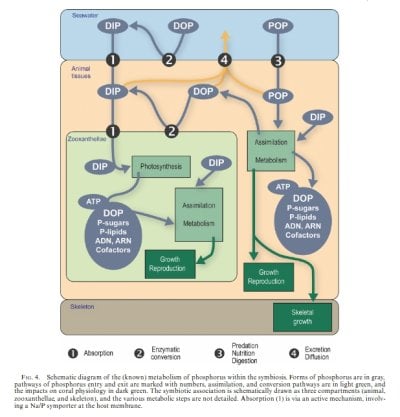How do people deal with having low nutrients but lots of hair algae? I have low nutrients 0.03 PO4 and 3.6 NO3 and my LPS are suffering from it so I want to raise my nutrient levels but I have a hair algae problem. I have to spend 4 hours every 2 weeks carefully scrubbing my rock and siphoning algae. Meanwhile I'm losing acans, scolys, and torches. Not to mention zoas which are being smothered by the algae. I'm running 2 filter rollers, a skimmer, an algae scrubber, a UV and ozone. I have a 150 with probably 50 scarlet hermits, 3 emerald crabs, 10 tuxedo urchins, lots of Astrea and Trochus snails, 4 Turbo snails, and 4 tangs.
IMO, most people don’t have 10 year old systems like Jda. 0.03 ppm Phosphate is very low. I’ve seen many reefers struggling with STN/RTN at that level especially in younger systems.
Here’s why people have bad algae problems. They have PO4 at .01-.03 in a young tank. They see algae pop up and take control. The assumption goes that if there is algae the Phosphate level is sky high, but the valves are coming back low, because the algae is consuming it faster than we can test for it.
The Phosphate is low, because the algae is consuming the majority of the phosphate, and is usually outcompeting the corals, and microbiome. The level isn’t high. It’s low. It’s not available, and what is available typically isn’t enough. Everything needs phosphate to function, but the algae is limiting everything else and causing a crap storm in the tank.
The first reaction for most reefers when they see algae is to start GFO, Carbon Dose, Skim Wet, do a water change, etc. Those are the worst thing’s you can do, because they all take a horrible situation and throw gasoline on the already raging fire.
Although it may seem counterintuitive, and against every natural instinct you have as a reefer, but the best thing to do is dose phosphate in that situation, or add more fish, feed more, remove filtration or harvest macro algae, etc. Get the PO4 up to .08-0.15
and watch the tank start to turn around. The algae actually slows down, and will eventually die off. It becomes outcompeted as the good guys wake up and enter the battlefield. Also keeping an eye on NO3 is smart. Zero NO3 can cause Cyano and other issues. Don’t scrub the rocks. Siphon the algae and grab the long stuff with your thumb on the end of the siphon tube. Add a good CUC. Once the algae is fading out and you manually remove the bigger stuff, they will take care of the rest. Just dose it up by .02 ppm daily until you reach .08 ppm. Hold it there for a few weeks and test daily and observe. Then report back.
Last edited:




















